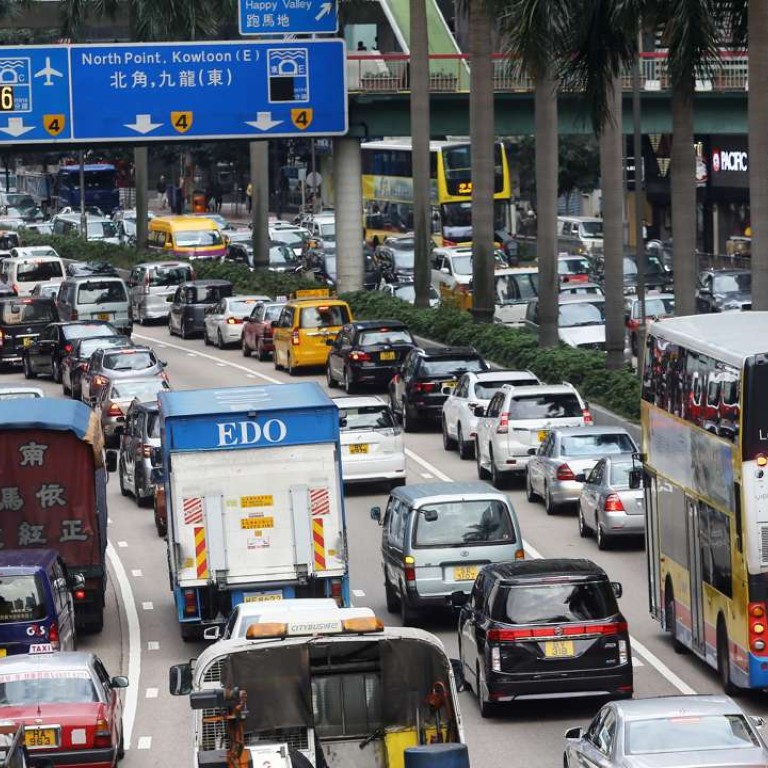
Hong Kong green group calls for curbs on car growth to improve air quality
Clean Air Network warns of rising nitrogen dioxide levels as a result of worsening traffic congestion
The Clean Air Network’s latest air quality review pointed to a “strong correlation” between hours of high nitrogen dioxide (NO2) concentrations measured at roadside air quality monitoring stations and traffic conditions.
Two weeks ago the Environmental Protection Department reported improvements in air quality and lauded its efforts to tackle pollution – namely particulate matter – through policies such as phasing out old commercial diesel vehicles.

“The first step to solving the problem is to accept that [uncontrolled vehicle growth] is a problem,” Fung said.
“Traffic operators and bus franchises blame illegal parking and think it’s an enforcement issue. Private car [owners] say there’s nowhere to park, so its a land issue. Public transport users blame private car drivers – maybe it’s a wealth gap issue. Car owners then say it’s a free market.”
The group plotted average annual pollutions levels against average annual daily traffic on a spatial distribution map. The results showed that at stations on busy roads – 105,000 vehicles or more passing through daily – NO2 concentrations were on average above 40 micrograms per cubic metre of air. This is the level set as the city’s annual air quality objective and the World Health Organisation’s recommended safe limit.
Roadside concentrations of NO2 fell by 17 per cent last year. But the average annual concentration of 82mcg per cubic metre was still more than double the annual target.
Fung said traffic jams increased travel times and prolonged human exposure to bad air, increasing accumulative health risks.
Over 800,000 cars were registered in 2015, a 30 per cent increase compared to 2006. The number of vehicles has doubled over the last two decades.
The department’s assistant director of air policy, Mok Wai-chuen, said earlier this month that tackling NO2 remained a “big challenge” and that more measures such as tighter emissions controls were being considered.

